Children at the heart of World Vision’s COVID-19 Health Crisis Response
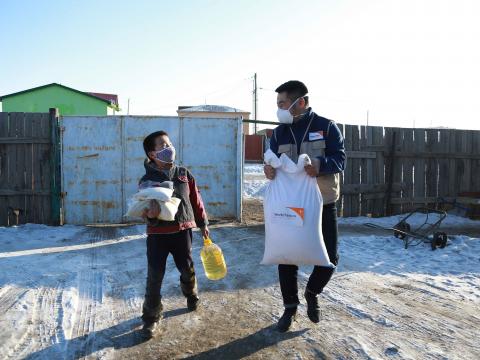
World Vision is putting children at the centre of its response effort after finding children had been left isolated and fearful by the COVID-19 outbreak. While the world focused on the increasing number of COVID-19 confirmed cases and its health impacts, children were left to witness friends and families falling ill and being hospitalised, while their schools closed and the streets fell silent.
Along with partners, World Vision is responding and supporting government initiatives to keep children and their caregivers safe. In Asia, we are on the ground and working round the clock to promote prevention behaviours and to educate communities on how to keep themselves safe, providing protective equipment to health workers, engaging with government health authorities and planning next steps on how to respond. World Vision is taking steps to reduce the impact of COVID-19.
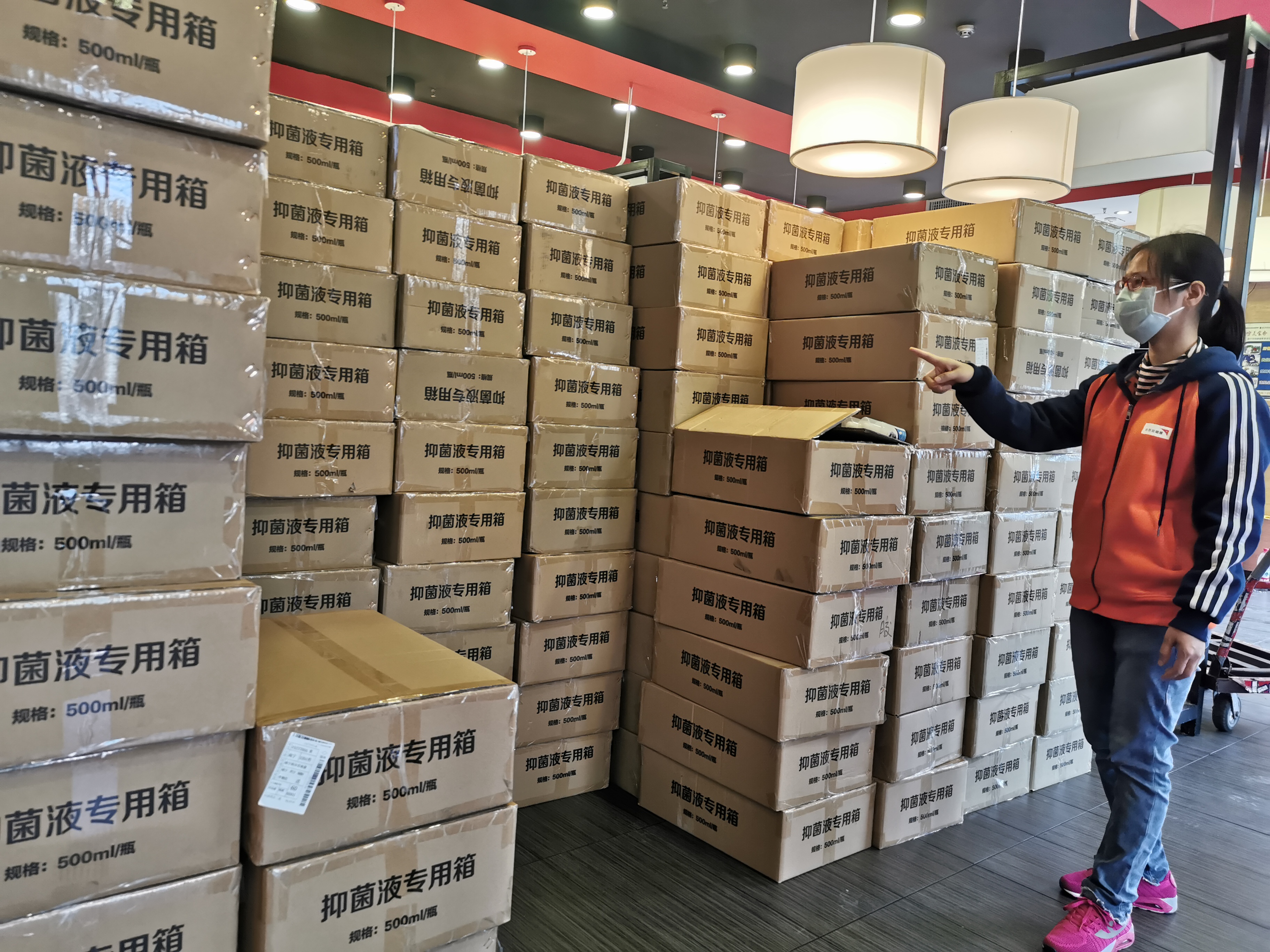 As part of WV China's Covid-19 Response to reach 1.3 million people, has already provided 50,000 masks and over 2000 bottle of sanitizers. In the next phase of the response, over 46,000 hand sanitizers and more than 280,000 disinfectants, part of the Family Pack, have been procured and are ready for distribution. The product quality of each item in the Family Pack has been accepted and meets the MoH guidelines. WV staff have been working tirelessly to provide the much-needed medical gear and equipment to fight the spread of Covid-19 and keep communities and health workers safe.
As part of WV China's Covid-19 Response to reach 1.3 million people, has already provided 50,000 masks and over 2000 bottle of sanitizers. In the next phase of the response, over 46,000 hand sanitizers and more than 280,000 disinfectants, part of the Family Pack, have been procured and are ready for distribution. The product quality of each item in the Family Pack has been accepted and meets the MoH guidelines. WV staff have been working tirelessly to provide the much-needed medical gear and equipment to fight the spread of Covid-19 and keep communities and health workers safe.
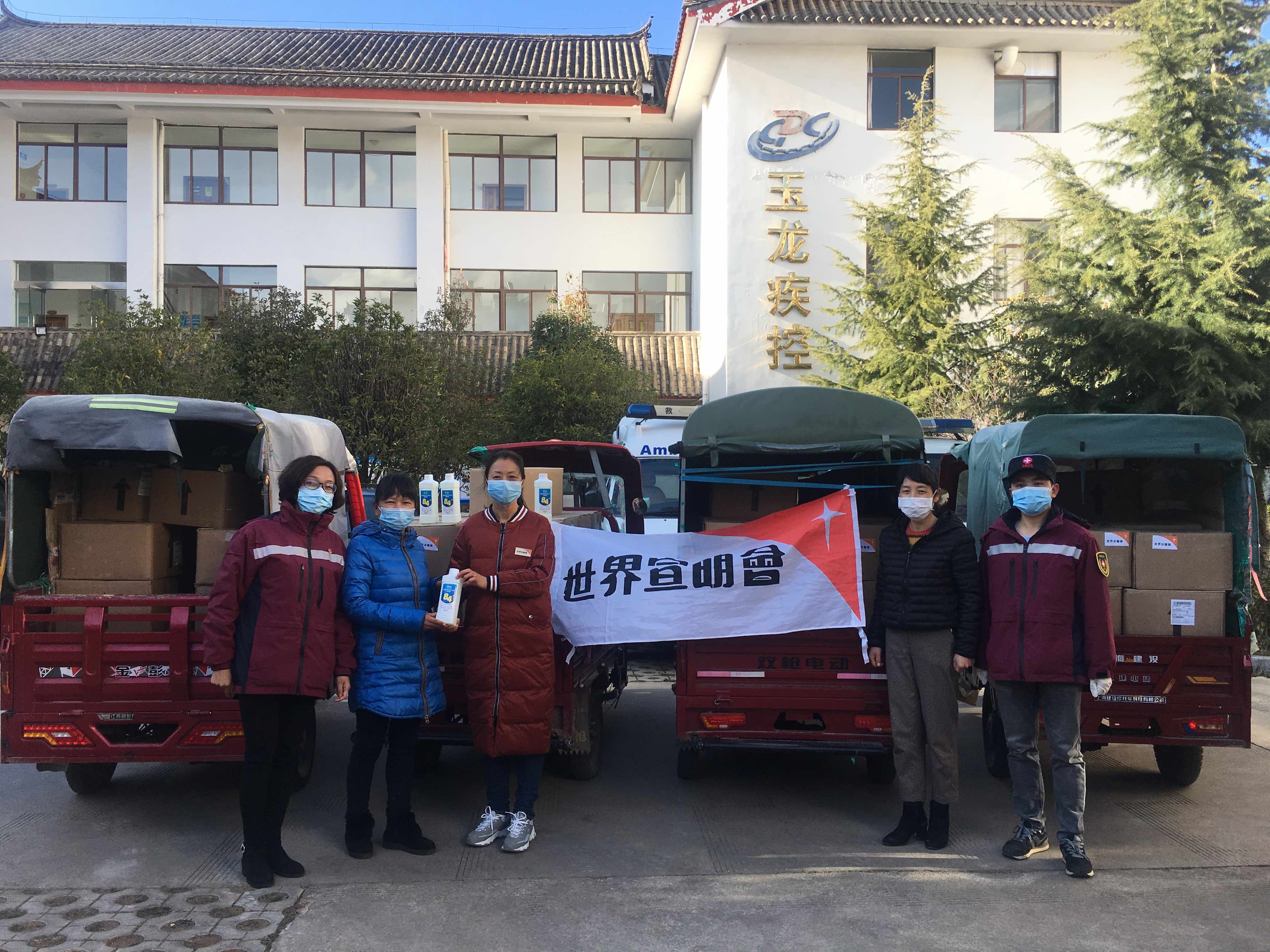 On 27th February, World Vision Yulong AP donated 2,000 bottles of disinfectants to the Yulong County Health Bureau to support the local prevention and control work on COVID-19 outbreak. The disinfectants was distributed to schools through the local Education Bureau.
On 27th February, World Vision Yulong AP donated 2,000 bottles of disinfectants to the Yulong County Health Bureau to support the local prevention and control work on COVID-19 outbreak. The disinfectants was distributed to schools through the local Education Bureau.
 Most schools in China have been suspended because of the coronavirus outbreak. However, the education department in most provinces is facilitating online teaching methods. But children are missing the outdoors and socialising with peers. “I like studying at home because I can eat wherever I feel hungry. And I chat with my classmates on WeChat when I miss them. But I wish the outbreak could be over soon. I want to go downstairs to play roller skate with friends," says Linlin.
Most schools in China have been suspended because of the coronavirus outbreak. However, the education department in most provinces is facilitating online teaching methods. But children are missing the outdoors and socialising with peers. “I like studying at home because I can eat wherever I feel hungry. And I chat with my classmates on WeChat when I miss them. But I wish the outbreak could be over soon. I want to go downstairs to play roller skate with friends," says Linlin.
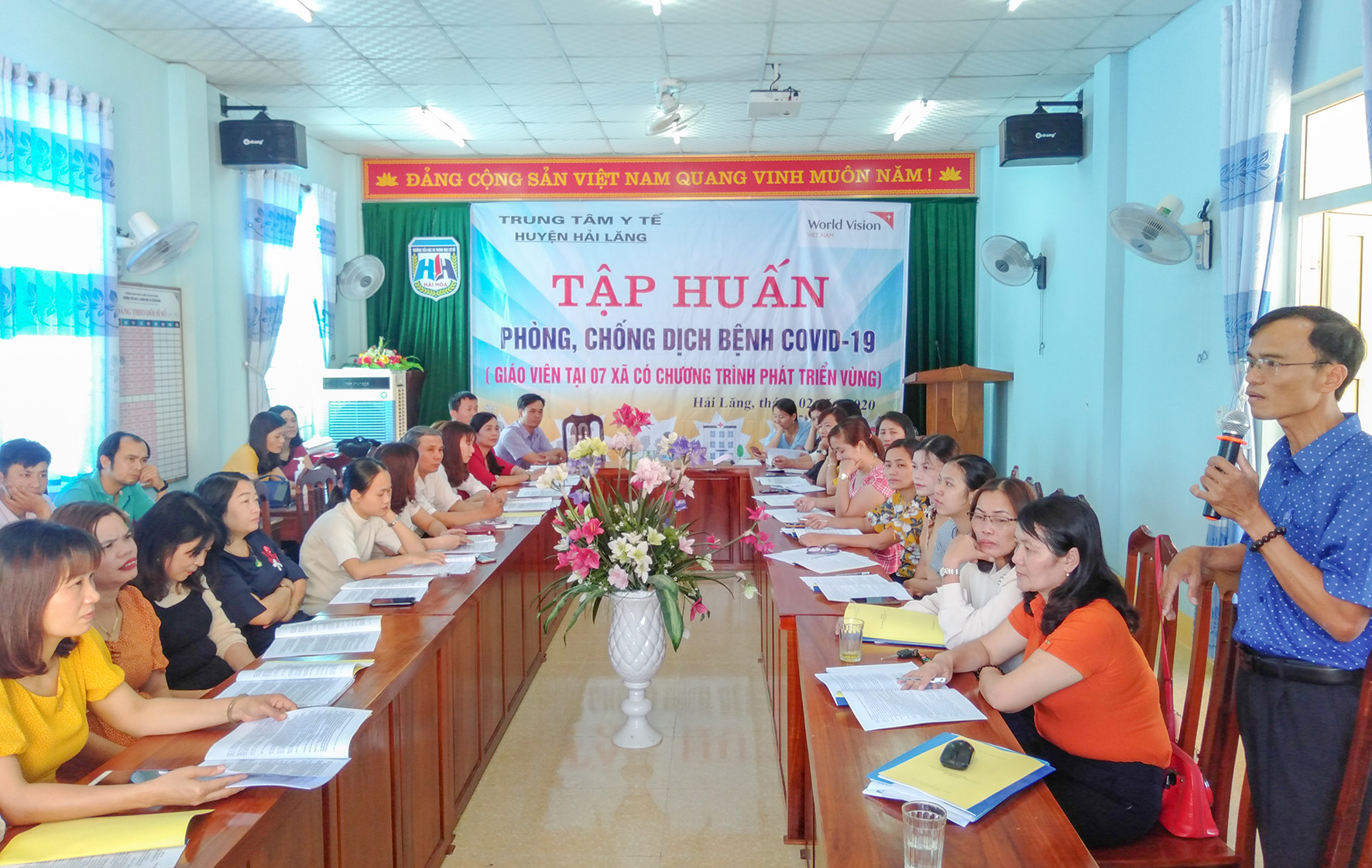 In Hai Lang District, Quang Tri Province, together with Hai Lang District Medical Center and District Education Department, World Vision organized training on Covid-19 prevention and control for teachers in seven project communes.
In Hai Lang District, Quang Tri Province, together with Hai Lang District Medical Center and District Education Department, World Vision organized training on Covid-19 prevention and control for teachers in seven project communes.
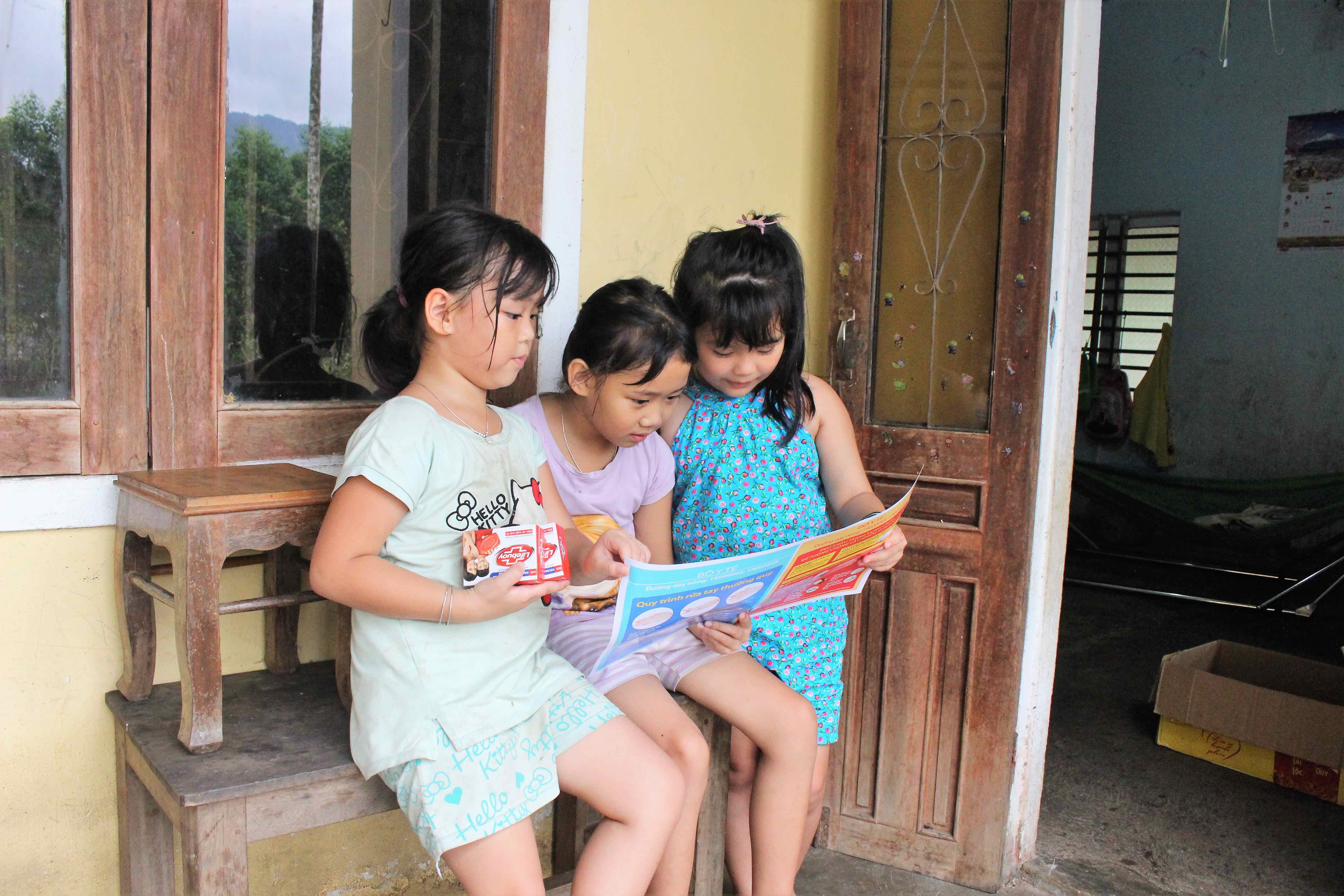 In Minh Long district, Quang Ngai province, World Vision cooperated with the district Red Cross to organize communication sessions to improve Covid-19 prevention capacity for the community, especially most vulnerable children, sponsored children and their families. Through communication sessions like these, children and their families can better understand the transmission models of Covid-19, as well as being equipped with knowledge and skills for effective infection control methods, to ensure the safety of themselves and those around them.
In Minh Long district, Quang Ngai province, World Vision cooperated with the district Red Cross to organize communication sessions to improve Covid-19 prevention capacity for the community, especially most vulnerable children, sponsored children and their families. Through communication sessions like these, children and their families can better understand the transmission models of Covid-19, as well as being equipped with knowledge and skills for effective infection control methods, to ensure the safety of themselves and those around them.
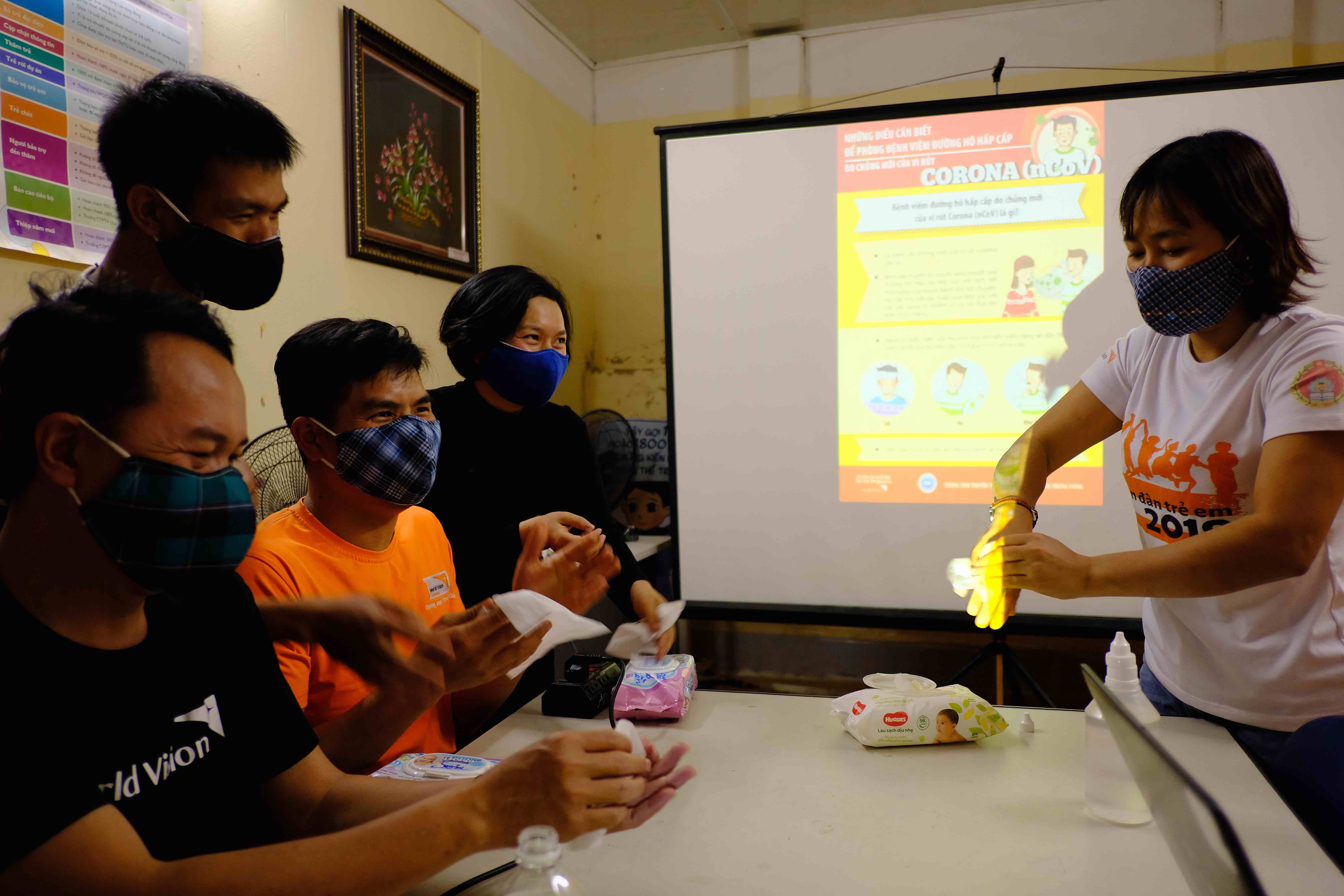 To cope with the current outbreak of novel coronavirus (2019-nCoV), last week, World Vision Vietnam organized a series of information workshops to help its staff gain thorough understanding about the mode of transmission of the virus and how to take protective measures at the programming level. World Vision has also worked closely with local radio facilities to disseminate necessary knowledge and skills, helping to ensure community safety.
To cope with the current outbreak of novel coronavirus (2019-nCoV), last week, World Vision Vietnam organized a series of information workshops to help its staff gain thorough understanding about the mode of transmission of the virus and how to take protective measures at the programming level. World Vision has also worked closely with local radio facilities to disseminate necessary knowledge and skills, helping to ensure community safety.
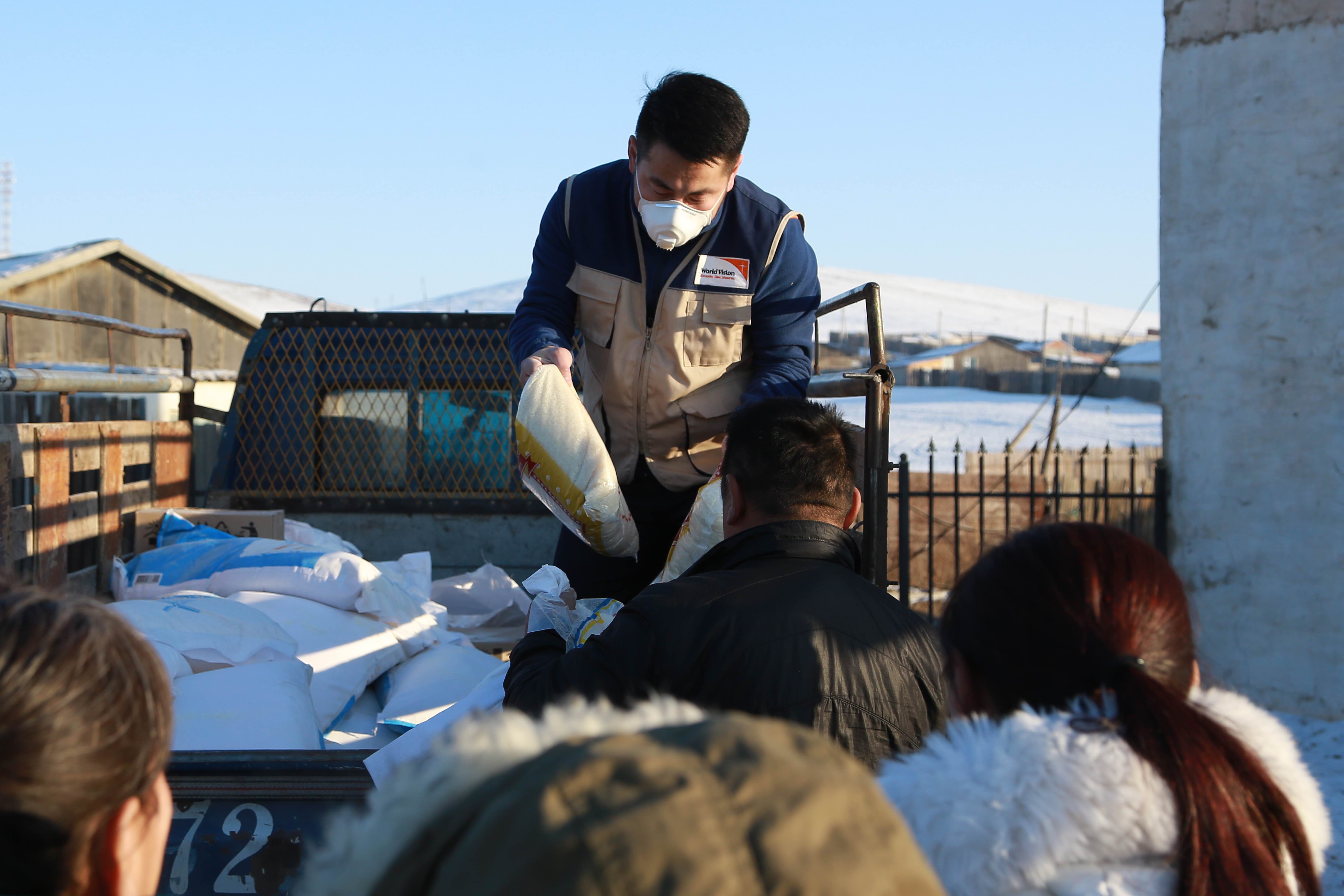 In this emerging context for preventing the spread of the Novel Coronavirus, World Vision Mongolia have distributed primary food supply and hygiene supplies to 3,367 most vulnerable households in 15 provinces within six districts of Ulaanbaatar.
In this emerging context for preventing the spread of the Novel Coronavirus, World Vision Mongolia have distributed primary food supply and hygiene supplies to 3,367 most vulnerable households in 15 provinces within six districts of Ulaanbaatar.
 In Nepal, Sri Lanka, Thailand, Indonesia, China, and Philippines, educational materials were produced to complement the government's efforts to prevent the further spread of coronavirus, especially in the most vulnerable communities. These materials were used distributed to partner schools and other target areas. In coordination with local health units, orientation about the virus was done during World Vision activities in communities.
In Nepal, Sri Lanka, Thailand, Indonesia, China, and Philippines, educational materials were produced to complement the government's efforts to prevent the further spread of coronavirus, especially in the most vulnerable communities. These materials were used distributed to partner schools and other target areas. In coordination with local health units, orientation about the virus was done during World Vision activities in communities.